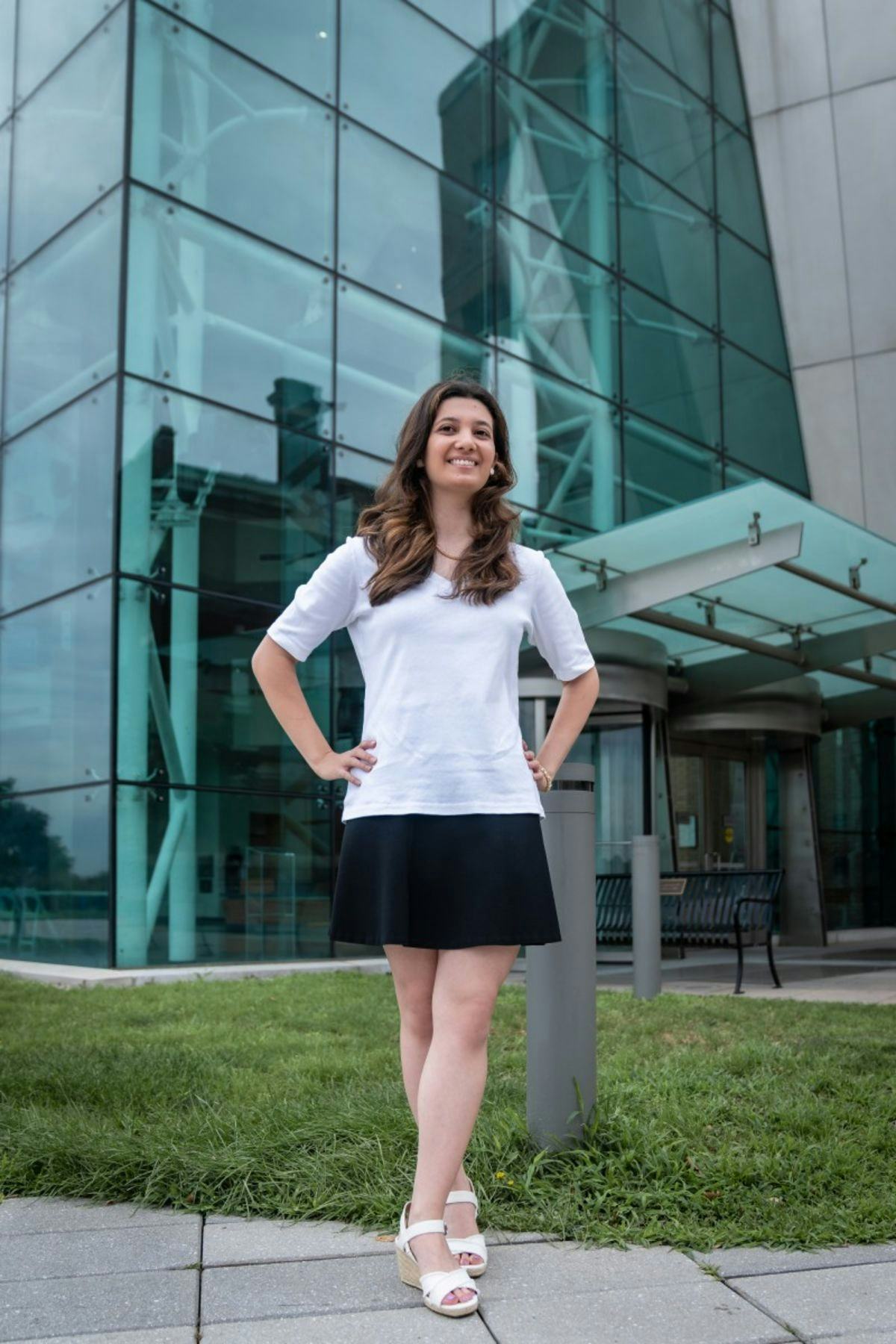Quantitative finance students Christa Ruiz ’25 and Kara Pietrowicz ’25 are mastering machine learning through summer research
With new technologies increasingly using artificial intelligence to attract consumers, classrooms are optimizing coursework and research to pay particular attention to machine learning. Through the Pinnacle Scholar and Innovation and Entrepreneurship Research programs, quantitative finance students Christa Ruiz '25 and Kara Pietrowicz '25 have spent the summer participating in a research program to master machine learning in the quantitative finance field. Both students have been working with Professor Alkiviadis Vazacopoulos, an expert in artificial intelligence and application development, and are publishing their findings on a weekly basis on LinkedIn.
Forecasting the future of artificial intelligence
From Lyndhurst, N.J, Christa Ruiz, who jumped into research just after her first year at Stevens, has focused on studying machine learning and forecasting. Forecasting is the process of using data to predict past and future trends. In forecasting, statistical models are the standard for accurate models, but the advancement of machine learning could soon make statistical models a thing of the past.
Ruiz and Professor Vazacopoulos, studied the performance of ten machine learning models and methods regarding their accuracy. In an article published on June 13, they provided insight on why machine learning models are still limited and aren’t ready to take over the forecasting industry just yet. “[Machine learning] methods must improve to become more accurate, require less computer time, and overall be understood more,” Ruiz and Vazacopoulos wrote in the article. “Clearly, traditional statistical methods are more accurate than [machine learning] ones and the reasons why are yet to be known for sure.”
Ruiz believes that participating directly in the research as well as publishing articles on her insights helped her understand current trends in forecast models. It also “helped me understand the difference between statistical versus machine learning models,” Ruiz said. “Machine learning models are newer and more up-and-coming, yet statistical models still dominate the forecasting industry.”
Ruiz said she decided to do summer research to make better choices about her career and personal goals. “I wanted a research position that interested me, and when I saw this opportunity, I knew it was something I wanted to do,” Ruiz said. “Mostly, I wanted to explore and discover what I’m truly passionate about because I want to know what would make me happy when I’m looking for a job or a career.” So far, she feels confident in her decision, and she has enjoyed the research program.
Making revelations with RapidMiner
From Farmingdale, N.J., Kara Pietrowicz, a rising sophomore participating in summer research, has been excited to research machine learning because of its practical applications in everyday life. Studying alongside Professor Alkiviadis Vazacopoulos, Pietrowicz has been able to make new revelations about machine learning. “Most of us are exposed to machine learning algorithms without knowing it,” Pietrowicz and Vazacopoulos wrote in a July 10 article. “Regardless of the end goals, organizations utilize artificial intelligence to create machine learning (ML) models to address various problems they face.”
Using the machine learning tool RapidMiner to study machine learning and forecasting, Pietrowicz has been creating predictive machine learning models to forecast methodologies in the retail industry. “We’re trying to predict future unit sales performance for different Walmart stores,” Pietrowicz said. Using data from over 7000 products at Walmarts across the United States, Pietrowicz made a machine learning model to forecast one day of unit sales at different retail stores.
In a second article published on June 15, Vazacopoulos also provided analysis on the M5 forecasting competition, which uses sales data provided by Walmart. “Developing an accurate forecasting model for Walmart was a major accomplishment of the Makridakis competition,” Pietrowicz and Vazacopoulos wrote in the article, “but the chosen model could not have been generalized for other retail firms.”
Pietrowicz decided to pursue research in quantitative finance because of her longtime passion for statistics and forecasting. “I was part of the science and engineering program at my high school, and I enjoyed statistics,” she said. “But I wasn’t sure about my career path after high school, so I had to do some research about how careers apply statistics. Since I didn’t have to look at the engineering side, I decided to look at the business side. That’s when I found quantitative finance. I also discovered quantitative finance has a major subtopic of machine learning and artificial intelligence, which I found very unique.”
Since being part of the summer research program, Pietrowicz believes she is well equipped to make machine learning models. “I was excited to learn RapidMiner because it has made machine learning so much easier to understand,” she said. “In my past projects, I’ve had to create machine learning algorithms in a statistical programming language, which can take hundreds to thousands of lines of code. With RapidMiner, I can create them easily in flow charts.”




